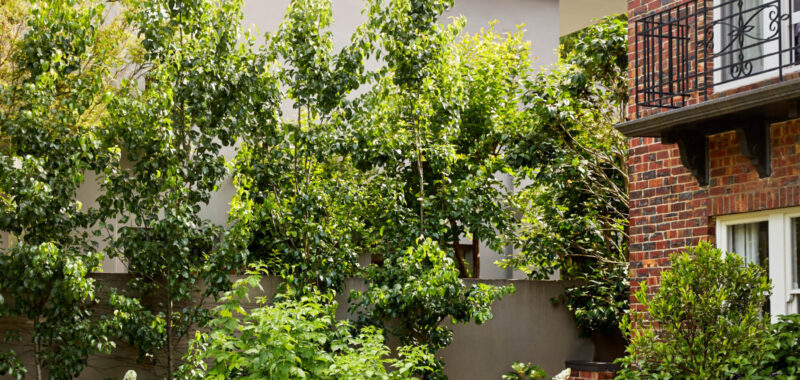Melbourne’s Armadale is known for its leafy parks, High Street eateries and historical homes featuring beautifully landscaped gardens — now including interior designer Lixa Buxton’s, thanks to a transformation by her friend and garden designer Andrew Panton.
The flourishing garden sits proudly at the front of the impressive 1930s Tudor-style home; a welcome and visually pleasing entry point to the property.
Although it’s seen today as a thriving landscape with a rustic yet contemporary feel, Andrew says it was quite an “old traditional garden” when Lisa first called on his expertise to transform the grounds.
‘It had some charm but quite a few of the established trees and shrubs were not healthy, and it was screaming for an update!” Andrew says. “I saw lots of potential for this large space.”
The main overhaul occurred at the front; a spacious garden divided by a Portsea blue granite driveway. Four stately cauldron-style urns filled with kumquat trees frame the pathway (also Portsea blue granite) leading up to the home, adding to the majestic nature of the entire frontage.
Given the historic character of the house, Andrew wanted to create a garden that complemented the facade but still had its own individual flair.
So, he incorporated a mix of ornamental and fruiting trees, perennials and native plantings to breathe life and colour into the natural landscape, adding a sense of wilderness to contrast the manicured lawns and regal architecture.
Custom veggie boxes made from reclaimed Western Australian railway sleepers also add to this provincial feel, as do the Corten steel rings around the towering birch trees and garden beds. Andrew adhered to Lisa’s brief of including an edible area of garden, but ensured he did so in a sophisticated and environmentally friendly manner.
‘I love the rustic charm of the veggie boxes, they are truly unique,’ he notes.
As for the array of flowers and plantings, Andrew and his team used dwarf salvia for bursts of colour and year-round visual interest, while westringia fruiticosa (coastal rosemary) and buxus fruiticosa (boxwood) provide a layered element to the garden. The salvia nemorosa (woodland sage) plantings are also one of Andrew’s favourites — a compact perennial with beautiful deep blue hues that fade to a soft purple over time.
‘I incorporated a colour palette consisting of white, various shades of purple, blue and some soft pink,’ he adds. ‘These colours complement each other without being too garish, and help create a sophisticated yet understated look.’

